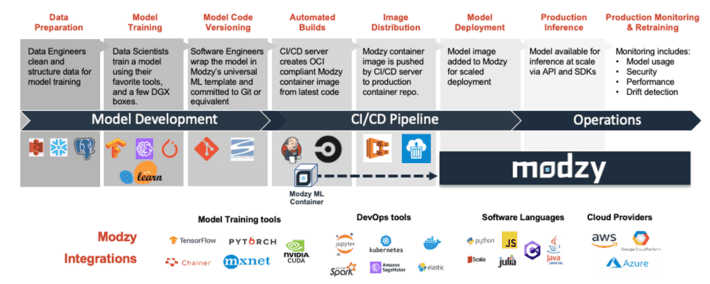
Artificial Intelligence (AI) is all the buzz with everyone looking for ways to leverage AI in some capacity within their organization. Whether you’re running a business focused on insurance, construction, or anything in between, the list of companies adding AI or Data Science teams to help their business succeed is growing every day. Unfortunately for those tasked with making the decision to fund these emerging teams, the ROI for AI investments isn’t always immediately clear. Sure there are companies that have increased their bottom line by increasing their AI investment, however, their success isn’t the norm.
According to leading industry analysts it takes 9 months to turn an idea for an AI application into a mature, stable production capability, and that’s assuming the idea isn’t one of the 47% of AI investments that never make it out of the lab for one reason or another. With so much lead time and risk associated with implementing your own AI solutions, committing to AI investment can rightly be seen as a risky proposition. As a decision-maker, you must decide whether funding AI investments is as risky as not investing in AI and having your competition develop an edge.
This isn’t a philosophical decision. It’s a decision many of the world’s largest corporations have thoroughly explored yielding dramatically different results for revenue. Take for example:
- Target’s AI and Data Science investments have helped increase revenue $2.5B / year for the last 15 years from $50B in 2005 to $88 Billion in 2020
- In 2008 when Blockbuster had $5B in revenue, it chose to ignore Netflix’s investments in AI and Data Science. Two years later Blockbuster was bankrupt
With this being such a meaty and thorny topic, I’ll be writing a series of blogs devoted to the topic. You’ll see what it takes to implement AI within your organization and what questions you should be asking vendors and your staff. Prepared with this information, you can better determine whether or not it would be a good idea to invest your corporate resources into internal AI development.
Hard work now pays dividends later
Implementing AI in your business can come with a lot of upside. However, it is a long-term investment with several challenges that have to be addressed for each AI investment you are considering funding to include:
- Data has to be located, prepped, and labeled.
- Labeled data has to be used to build an AI model.
- Model(s) have to be integrated into an actual software program.
- Software program(s) have to be made portable through containerization.
- Container image(s) have to be stored in a place that a production system can reliably access.
- Container image(s) need to be uploaded to a production system.
- The production system needs to be able to scale availability of the container to meet user demand.
- Monitoring of model usage of the model and the efficacy of its use is a must.
…and each of these challenges requires a separate set of skills that are unlikely to be substantially understood by staff carrying out other activities in the pipeline.
Rest assured – it is not all doom and gloom and there is good news to be shared. By being proactive and tackling these challenges head on, you can establish a well-functioning AI productization strategy that brings your organization’s AI capabilities under one umbrella. A unified strategy that allows capabilities to be leveraged, governed, audited, and updated from a central location for the good of your organization just as you expect of every other technology you implement. And since most companies are just starting to realize the need for having a cohesive strategy around AI productization by tackling it now, you’ll be ahead of your competition as they try to catch up.
Structuring your approach to your ModelOps pipeline
Through the next eight blog posts, I’ll walk through the foundational elements you need to understand to overcome each of these eight challenges around your AI investments. You’ll get a better idea about developing a structured approach for organizing your efforts via the ModelOps pipeline.
Try not to stress over what you see in the graphic above. By the end of this series, you will be exposed to the big questions you need to ask and answers you need to get so that you can make informed decisions about the AI investments being proposed at your company.
Visit Modzy.com to learn more.
